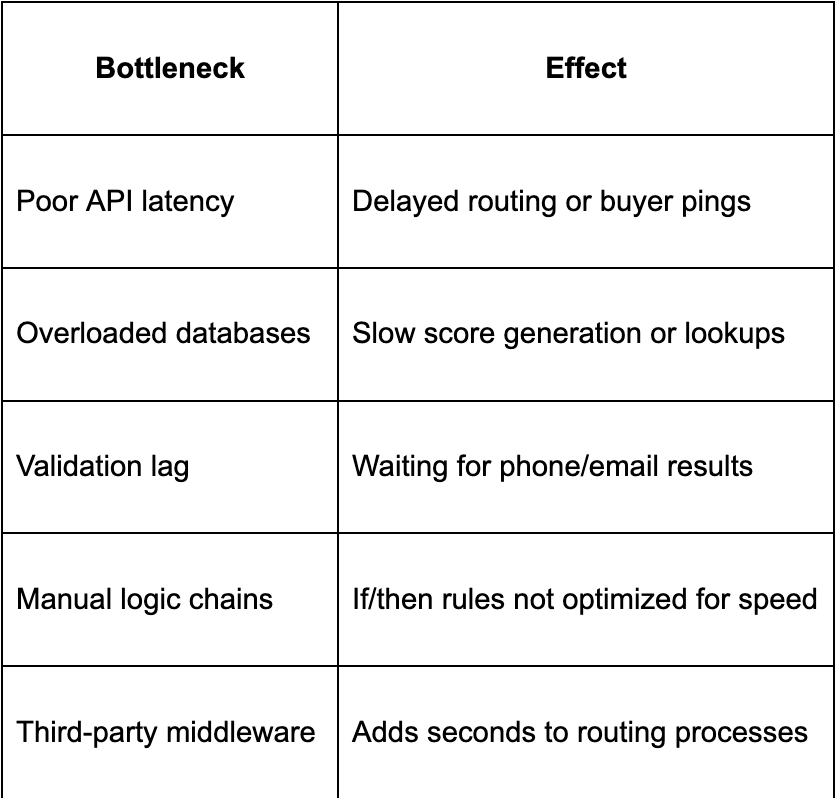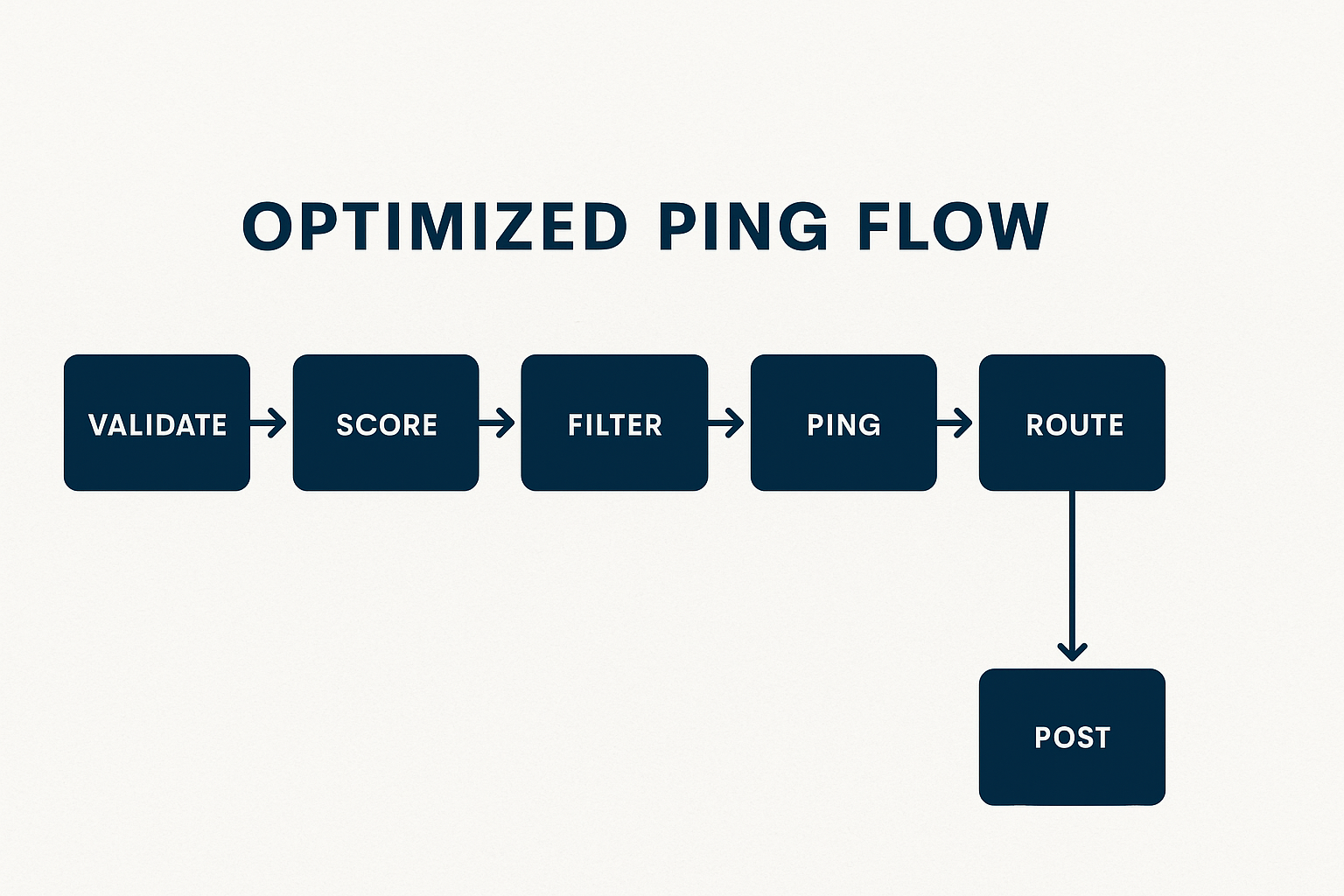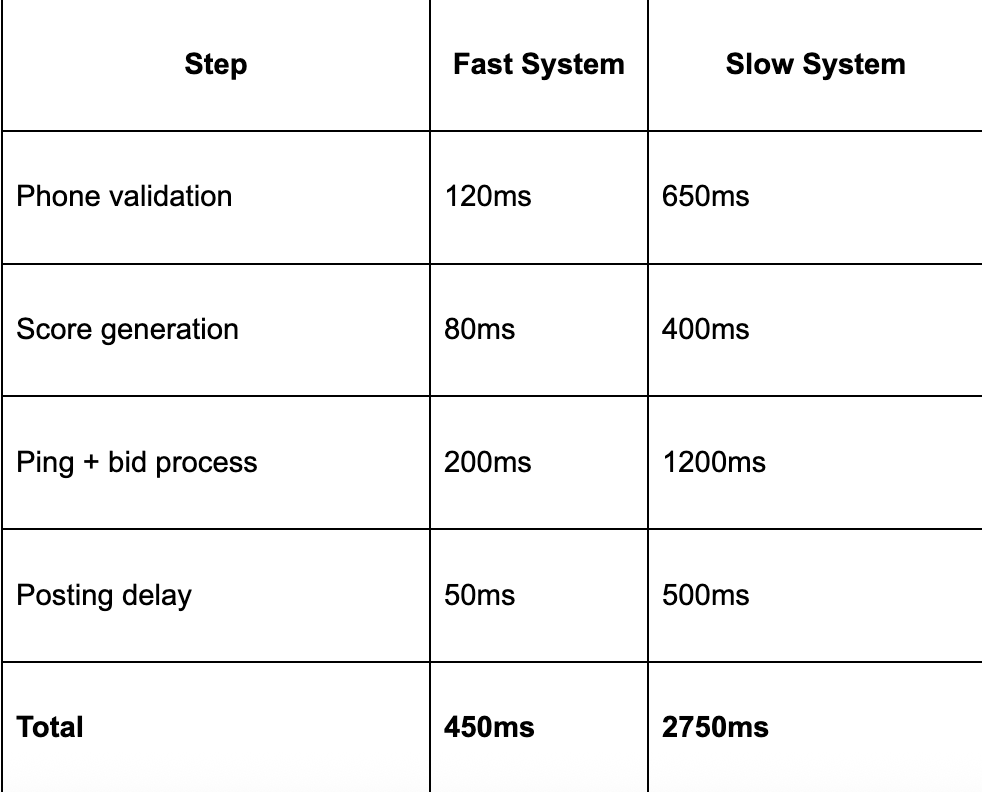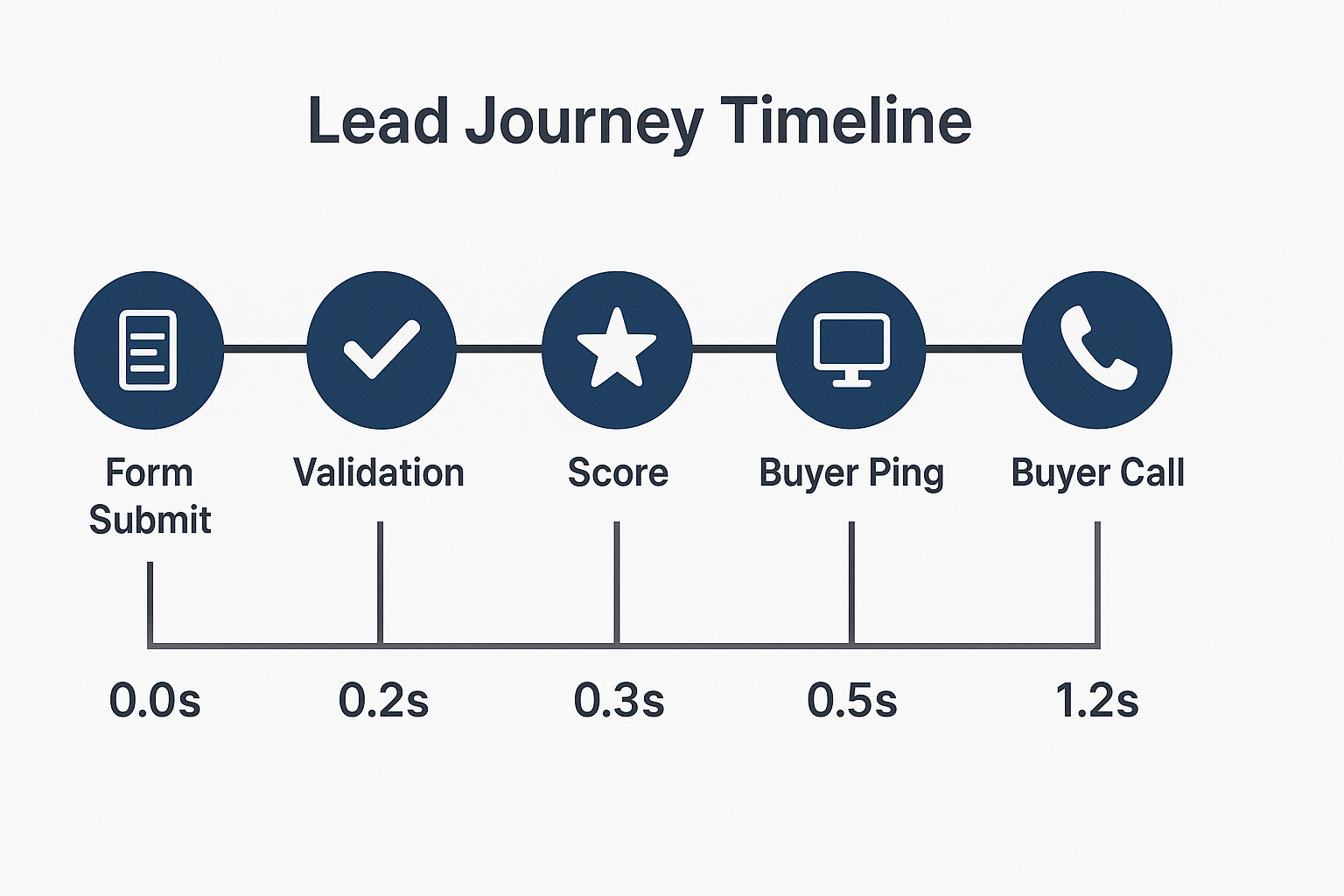In performance marketing, speed isn’t just a bonus—it’s everything.
Whether you’re generating leads for insurance, solar, financial services, or home services, what happens in the first few seconds after lead capture determines whether that lead becomes revenue—or waste.
That’s why lead velocity—the speed at which a lead moves through your system—has become one of the most critical (yet misunderstood) performance metrics in ping post distribution.
Platforms like Standard Information are built specifically to optimize lead velocity, ensuring that leads are validated, routed, and posted in real time—because if you wait, you lose.
1. What Is Lead Velocity?
Lead velocity refers to the time it takes from lead generation to final delivery (and ideally, buyer contact). This includes:
- Time to validate lead fields (e.g., phone/email)
- Time to score and qualify the lead
- Time to ping it to buyers
- Time to receive bids
- Time to post and deliver
In high-performing systems, this process happens in under 1 second. If it takes 5 seconds? You’re already at risk of losing value.
2. Why Lead Velocity Impacts Conversion Rates
According to Lead Response Management, calling a lead within the first 60 seconds can boost conversion rates by over 391% compared to waiting 5 minutes. Here’s why:
- Consumers are still in the research mindset
- They expect instant replies after submitting forms
- Competing brands are also chasing them
In ping post, the fastest delivery wins—and the fastest buyer to contact often closes the sale.
3. The Ping Post Multiplier Effect
Ping post isn’t just about delivering leads—it’s about letting buyers compete in real time based on who values the lead most. But that only works if the ping is:
- Accurate (based on validation & scoring)
- Instant (delivered within 200–500ms)
- Prioritized (filtered through logic & rules)
Platforms like Standard Information are designed to support <500ms delivery windows with pre-ping validation and filtering—ensuring both buyers and sellers maximize value.
4. What Slows Down Lead Velocity?
Even a few hundred milliseconds of delay can crush performance. Common culprits include:

5. How to Improve Lead Velocity
Improving velocity isn’t about cutting corners—it’s about engineering for speed.
Here’s how:
1. Real-Time Validation
Use instant phone, email, and IP validation—no batch processing or after-sale checks.
2. Pre-Ping Filtering
Filter out unqualified or duplicate leads before routing to buyers.
3. Asynchronous Scoring
Calculate lead scores in parallel, not in series, using microservices.
4. Optimized Buyer Matching
Avoid slow waterfall logic—use ping-first routing to match in <500ms.
5. Latency Monitoring
Track milliseconds, not just seconds. Use tools like Pingdom or Datadog to measure system response time.

6. Lead Velocity by the Numbers
Let’s compare two lead systems:

In this example, the fast system delivers the lead over 2 seconds sooner—which can double contact rate and dramatically increase monetization.
7. Why Lead Velocity Boosts Buyer Value
Buyers care about one thing: ROI. They know:
- A faster response gets better pickup rates
- A warm lead is more likely to convert
- Competition delays kill deals
When you deliver leads with high velocity, you get:
- Higher bids
- Fewer refunds
- Longer buyer relationships
- Increased post-sale revenue
Platforms like Standard Information allow buyers to track lead velocity metrics across sources—making it easy to reward top-performing sellers.
8. Case Study: Speed Equals Scale
A national solar provider worked with a ping post platform to improve their lead velocity.
Before Optimization:
- Avg. delivery time: 2.9 seconds
- Avg. conversion rate: 6.1%
After Optimization:
- Avg. delivery time: 0.7 seconds
- Avg. conversion rate: 10.4%
Result:
- +70% higher ROI
- -20% refund rate
- +$7.20 avg. increase in bid per lead
9. Combining Lead Velocity With Lead Quality
Speed alone isn’t enough. High-velocity junk still gets refunded. The winning formula:
Speed + Score + Intent + Consent
Platforms like Standard Information enable lead sellers to:
- Validate in <500ms
- Score based on real-time criteria
- Route only when consent is confirmed
- Filter out mobile lines or litigators
This ensures that only qualified leads are delivered quickly—maximizing ROI and compliance at the same time.
10. Tracking and Reporting Lead Velocity
You can’t improve what you don’t measure. Every ping post operation should track:
- Time to validate
- Time to score
- Time to ping
- Time to post
- Time to buyer contact
With platforms like Standard Information, these metrics are available in real time—and visualized in dashboards or exported for buyer SLAs.

11. Lead Velocity as a Competitive Advantage
Most competitors don’t track this. Which is why you should. By optimizing for velocity:
- You win more auctions in ping post environments
- You command premium bids
- You reduce refund risk
- You increase buyer lifetime value
It’s one of the most overlooked growth levers in lead gen.
Conclusion: In Ping Post, Every Millisecond Matters
In the world of ping post, the fastest lead wins.
Every validation delay, logic error, or slow ping is a missed opportunity—and possibly a lost customer. Lead velocity isn’t about speed for speed’s sake. It’s about enabling performance at scale.
When paired with smart scoring, real-time compliance, and optimized routing, fast lead velocity becomes a competitive weapon—one that leads to higher conversions, stronger buyer trust, and more revenue per lead.
And with platforms like Standard Information, that velocity isn’t a guess—it’s engineered into every transaction.
FAQs
Q1: What's lead velocity in marketing?
Lead velocity is about how fast a lead goes from being created to being delivered. This includes checking it, giving it a score, pinging it, and posting it. Systems such as Standard Information do this in under a second, so buyers get leads when they're still interested.
Q2: Why does speed matter for getting people to buy?
Speed really matters for getting sales. If you contact a lead within a minute, they're way more likely to buy compared to waiting five minutes. Getting leads to buyers fast keeps them interested, gets better responses, and lowers the chance of refunds.
Q3: What makes lead delivery slow?
Things that slow down lead delivery include slow APIs, sluggish validation, overloaded databases, and inefficient logic. Every little bit of time adds up. Even a couple of seconds of delay can drop contact rates by a lot. Standard Information cuts down on these problems with pre-ping validation and asynchronous scoring.
Q4: How does Standard Information make lead delivery faster?
Standard Information is made to deliver leads in under a second. It checks, scores, and filters each lead before pinging buyers. This makes sure only good, qualified leads are delivered right away. This helps get more conversions, boosts buyer returns, and gets higher bids in auctions.